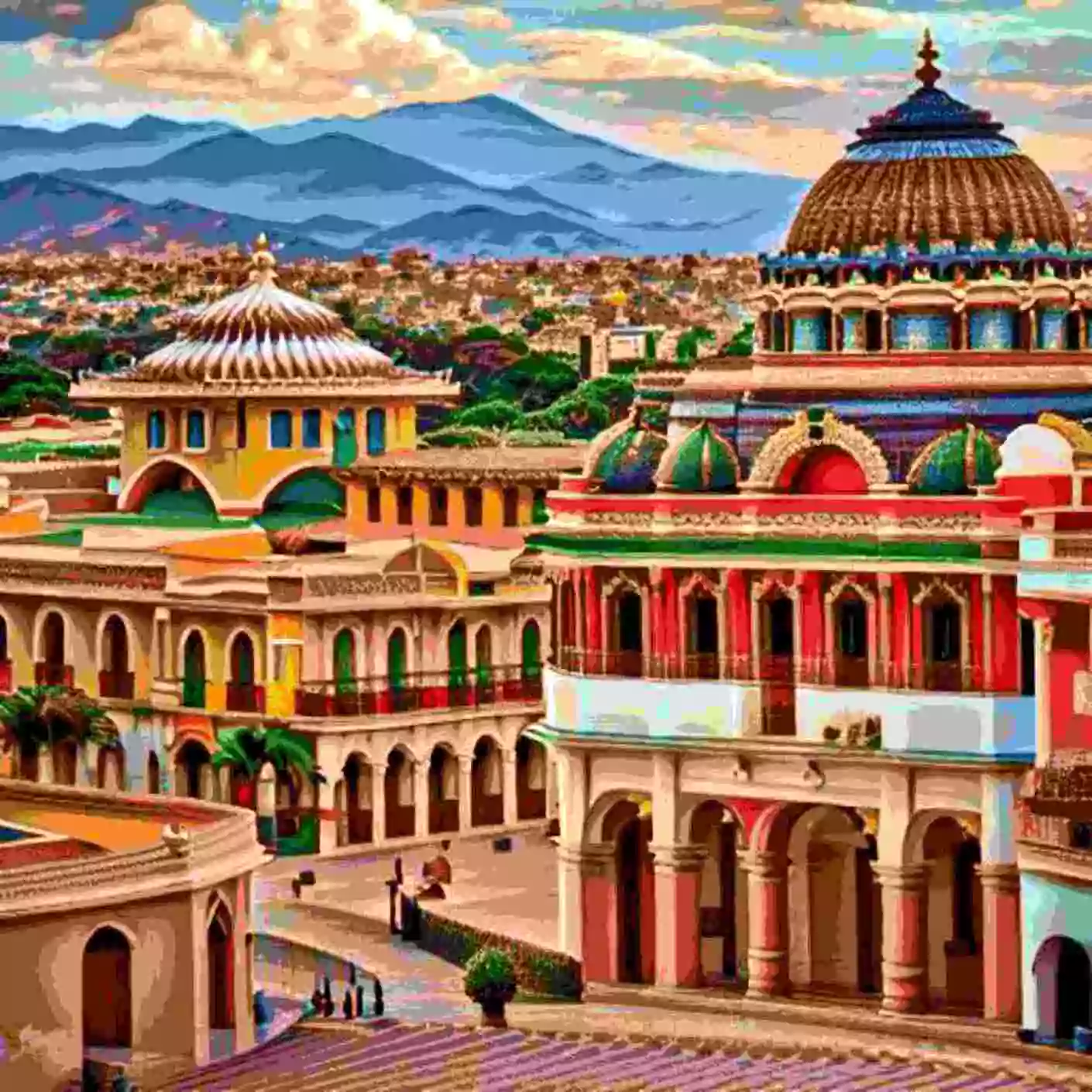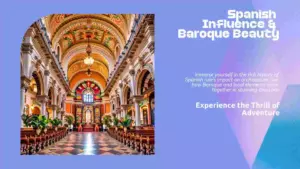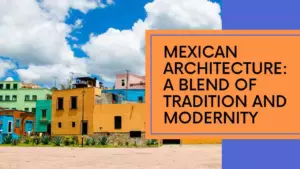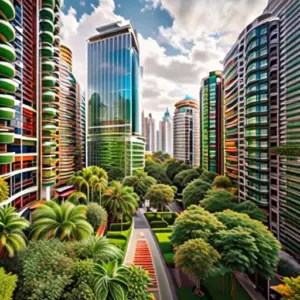
Let’s dive into the fascinating world of Mexican architecture together. I’m Ivan Rangel, your guide on this journey. Picture it like we’re about to explore a museum filled with incredible stories, only this one spans across the entire country of Mexico. You’ll get to see buildings not just as structures but as storytellers, each with a tale to tell about the rich history of this vibrant nation. So, grab your curiosity and let’s embark on this adventure through time and architecture.
Now, imagine every building as a chapter in Mexico’s storybook. From ancient civilizations to the sleek structures of today, we’re about to decode the architectural language that speaks volumes about Mexico’s past. Ready? Let’s uncover the tales etched in every brick and beam, making this journey not just informative but also a bit like solving a captivating mystery. Join me and let’s unravel the secrets of Mexico’s architectural wonders, one story at a time.
Mexican Architecture Unearthing the Past
Early Days (2500 B.C. – 300 A.D.): Lakam Ha’s Rise from Farming Village to Metropolis
Imagine Mexico, 2500 B.C. – a quiet spot named Lakam Ha, a tiny farming village with springs and streams. Now, fast-forward to 100 B.C. What happened? Lakam Ha grew up, transformed into a metropolis. Was it the springs or something else that fueled this growth spurt?
Tollan Period: Lakam Ha’s Cultural Boom and Monumental Size
Enter the spotlight—the Tollan period. Lakam Ha is now the main event, a bustling metropolis with a size and population that rivals small countries. It’s not just a city; it’s a cultural powerhouse. Imagine being in the center of it all during this time of cultural explosion. It’s like being front row at the coolest concert in history.
Puuc Style: Decoding Chichen Itza’s Architectural Fusion
Zoom in on Chichen Itza, the rockstar city of Mexican architecture. Its structures shout “Mexicanized” with vibes from Central Mexican cultures blended into the Puuc style. Some say it’s migration; others claim conquest. The result? Chichen Itza, a spicy blend of cultures, a testament to the coolness that Mexican architecture is all about.
So, from a small farming village to a cultural epicenter, Lakam Ha’s journey is the story of Mexican architecture’s roots. Chichen Itza? It’s not just a city; it’s a symbol of Mexico’s architectural coolness, etched in stone. The narrative? A page-turner in the world of Mexican architectural history.

Spanish Influence and Baroque Flourish
Spanish Rule’s Impact: Where Cultures Cozy Up in Churches
When the Spanish rolled into town, they didn’t just bring their flamenco moves; they brought a whole new vibe to Mexican architecture. Picture this: churches becoming the ultimate fusion dance floor, blending European classical flair with a dash of local spice. Mudejarismo, the architectural dance move of the time, twirled Moorish and Christian styles together like the ultimate tango. These early churches weren’t just places to pray; they were the birthplace of a cultural jam session.
Baroque Reign: Architecture’s Glamorous Extravaganza
Fast forward to the colonial scene and suddenly it’s the Baroque era stealing the show. Imagine churches dressed to the nines, dripping in gold and details fancier than a mariachi band’s playlist. Mexican Baroque wasn’t just about structures; it was a visual fiesta, telling tales of a society’s highs and lows through extravagant facades and over-the-top decorations.
Pillars and Pilasters – the Rockstars of Baroque Design
In the world of Mexican Baroque, columns and pilasters weren’t just support beams; they were the rockstars stealing the spotlight. Think of them like the Mick Jaggers of Mexican architecture. From twirly Salomonic columns to the inverted-truncated-pyramid coolness of estipite, each told a story. These weren’t just fancy pillars; they were the VIP pass to a spiritual concert. Understanding these architectural celebs uncovers the intricate layers of Mexican Baroque’s artistic depth.

19th to Early 20th Century: A Shake-Up for Modern Vibes
So, the 1800s hit Mexico like a cultural earthquake, right? Big changes in the air. Here’s the rundown on how the Mexican architecture decided to join the party.
French Invasion: Maximilian’s Makeover
1860s, meet Emperor Maximilian I. He walks in, waves his design wand and suddenly, Mexico’s urban scene is up for a makeover. Think of it like a design revolution, Maximilian style.
Neo-Gothic Marvels: Unleashing Architectural Drama
Hold onto your hats, because when Neo-Gothic style hit the scene, it was like architecture had downed a double espresso. Central Post Office and Palacio de Bellas Artes? Picture them as the rockstars of the architectural world.
Imagine this: soaring arches reaching for the sky, intricate details that make your jaw drop and a vibe that screams, “We’re not just buildings; we’re the drama queens of design!” Thanks to the genius of Adamo Boari, these structures are the Beyoncés of the architectural stage, stealing the show with every Gothic-inspired curve.
So, in a nutshell, Porfirian Mexico wasn’t just about political moves; it was about crafting an architectural identity that screamed uniqueness.
20th Century: Nationalism and Mexican Revolution’s Influence
a. Luis Zalazar’s Vision
In the mid-20th century, architect Luis Zalazar stood as a visionary catalyst for change in Mexican architecture. Zalazar’s impassioned plea for a national architectural style found its roots in the ancient remnants of pre-Hispanic ruins. His vision sought to resurrect the essence of Mexico’s cultural identity, encapsulated within the stones and designs of its historical past.
b. Pre-Hispanic Resurgence as a Symbol of Identity
Following the tumultuous Mexican Revolution, the nation underwent a profound metamorphosis. In this era of reconstruction and renewal, pre-Hispanic history emerged as a powerful symbol of Mexican identity. Architects, driven by a nationalistic fervor, began incorporating ancient themes and motifs into their designs. The buildings became more than structures; they became embodiments of a resurgent national pride.
c. Inspiration from the Past
The 20th century witnessed a harmonious blend of past and present as architects drew inspiration from Mexico’s colonial and regional architecture. Elements like ornate facades, archways and courtyard designs found their way into modern constructions. This architectural fusion not only paid homage to historical roots but also created a seamless transition between eras, telling a narrative that spanned centuries.

21st Century: Shaping Identity in Architecture
a. Bringing Back the Roots
After the Mexican Revolution, architects took a cue from the past. Picture this: ancient symbols, indigenous vibes and traditional tales woven into modern structures. It’s like telling the story of Mexico’s history through buildings. A nod to roots in a fast-paced world.
b. Buildings Caught in a Cultural Crossfire
In the 21st century, Mexican architects faced a dilemma, preserve heritage or chase global trends? It’s like choosing between grandma’s recipe and the latest food trend. Some buildings screamed tradition, others whispered globalization. Architectural debates mirrored a society figuring out its identity.
c. Eco-Architecture: Skyscrapers but Make ’em Green
Enter the green giants eco-skyscrapers. Think of them as high-tech trees, breathing sustainability. They aren’t just tall; they’re smart, controlling everything from lights to air. But that’s not all. Imagine giving old buildings a makeover. Recycling spaces like turning a vintage jacket into a trendy bag. Architects played environmental matchmakers, proving sustainability is not just a buzzword.
As Mexico strides into the 21st century, its architects are not just builders; they’re storytellers, balancing tradition, modernity and a greener tomorrow.
Conclusion
So, we’ve just taken a rollercoaster through Mexico’s architectural past, present and future. Imagine it like a colorful quilt stitched over centuries, with each patch telling a story.
Picture this: the Maya kickstarting Lakam Ha, growing from a farmers’ spot to a buzzing city. Fast-forward, the Spanish spice it up with classical vibes and the Baroque bling. Cue the 19th century – French vibes and a dash of Neo-Gothic glamour.
Now, we hit the 20th century; Luis Zalazar is waving the flag for a Mexican architectural identity. Post-Revolution, it’s all about remembering roots and blending old with new. Zoom into the 21st century, where we’re grappling with identity crises, eco-skyscrapers and a serious fondness for recycling buildings.
So, what’s the deal? Mexican architecture isn’t just brick and mortar; it’s a resilient tale of adaptability. It’s like a superhero – faced with revolutions and modern craziness, it stands tall. From colonial forts to modern eco-wonders, each building whispers, “We’ve got this.”
But here’s the real kicker – it’s not just about buildings. It’s a fiesta of culture. Baroque bling, indigenous vibes and a tech twist – it’s a mix that says, “This is who we are.” So, let’s not just see it; let’s appreciate it. Imagine wandering through time, feeling revolutions and witnessing modern marvels.
- Mar 20, 2024
Native Mexican Animals: Fascinating Wildlife
Fascinating Wildlife of Mexico: Native Mexican AnimalsWelcome to the top notch international of Mexico's natural world! Mexico is a place
- Mar 14, 2024
Safeway Money Order: Best Locations
Find out how easy and safe it's miles to ship cash with Safeway Money Orders. This manual suggests where to
- Mar 08, 2024
The Stock Market Plumbing To
In the complicated world of investing, the stock market plumbing sounds like a strange term. But it is an apt
- Feb 24, 2024
Beyond Finance Legit: Navigating with
Beyond Finance Legit: Unraveling the Legitimacy of Financial Service Providers in Today's Complex Landscape In modern-day complicated monetary panorama, it
- Feb 21, 2024
The Fundamentals of Corporate Finance
Unveiling the Core Tenets: Exploring 'The Fundamentals of Corporate Finance' When we talk about the fundamentals of corporate finance, we're





